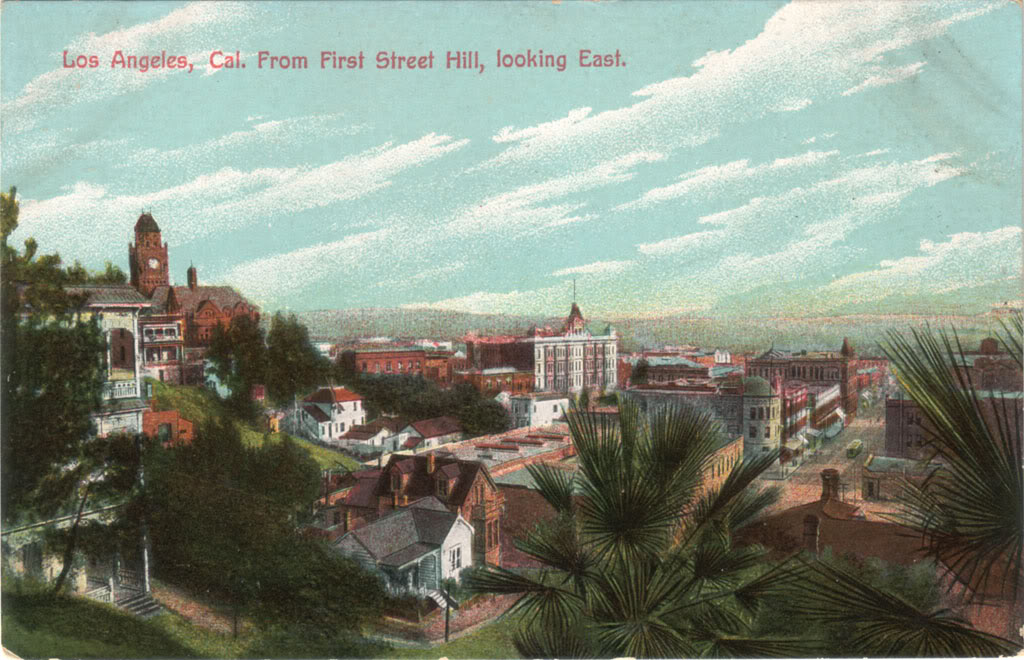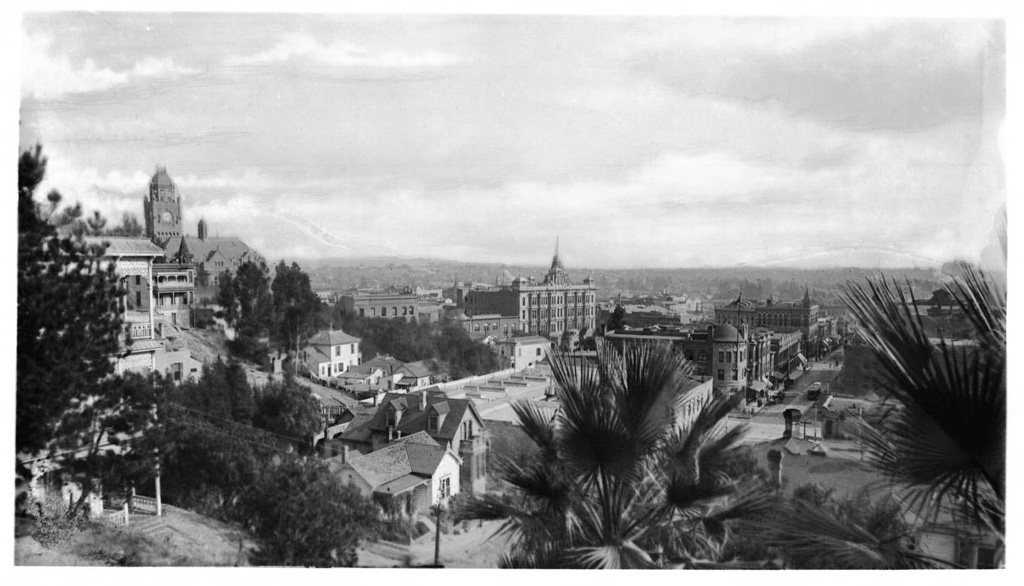Although influential in the commercial life of Los Angeles, Louis Phillips did not reside in the city itself. He lived on his land holdings in Spadra, on Rancho San Jose in eastern Los Angeles County. In 1875, Phillips built a mansion at Spadra, and there he dwelt for the rest of his life. When he died in 1900, Phillips was interred at nearby Spadra Cemetery.

Now for a personal connection. It turns out that I knew about the pioneer Phillips family decades before I became an L.A. history buff. It just so happens that, in the 1920s, my father went to school in nearby Pomona with one of Louis Phillips's descendants. One of the few stories Dad used to tell about his childhood was how he got a bad case of poison oak while he and the Phillips boy were hiking up on Elephant Hill, which overlooked the old family mansion...and Spadra Cemetery.
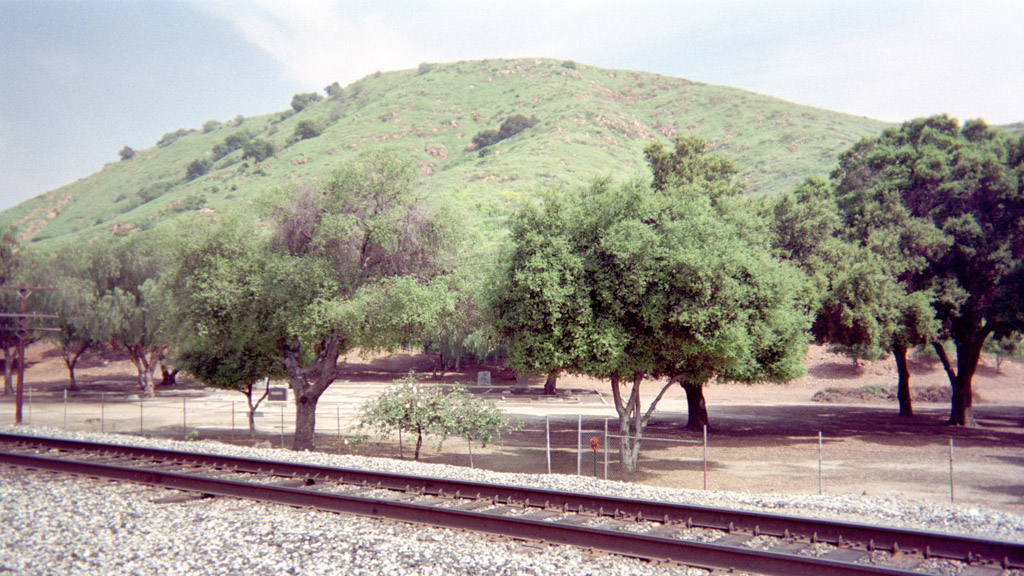
Spadra Cemetery and Elephant Hill, Pomona, California, March 19, 1998. Photo by J Scott Shannon.
I'd known about this old settlers burial ground myself since the 57 freeway was built in the early 1970s; it could be clearly seen from the northbound viaduct as it came down from Diamond Bar. I was intrigued by the place, but I never actually visited the cemetery until 1998. When I did, I was pleased to discover the Phillips family plot there, and I took this photo of the marble monument.
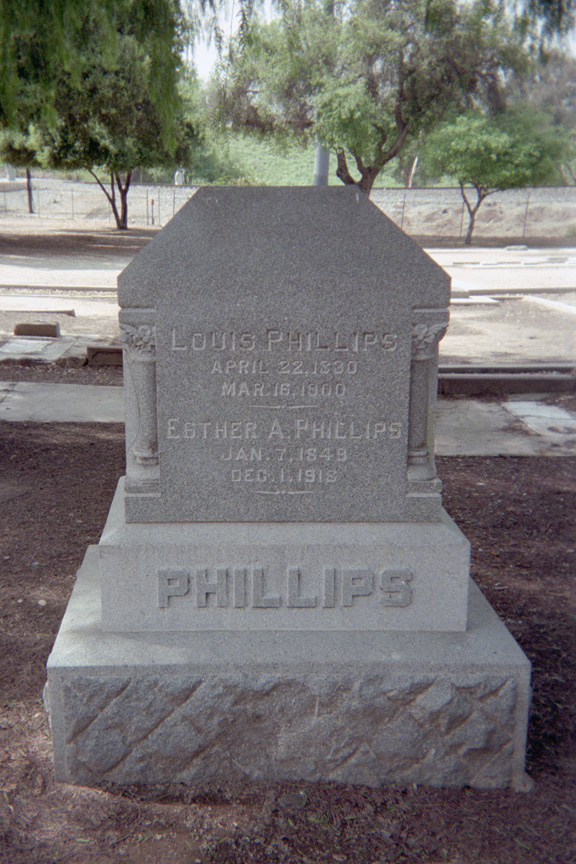
Photo by J Scott Shannon.
While researching this post, however, I was shocked to learn that Phillips's gravestone had more recently been vandalized.
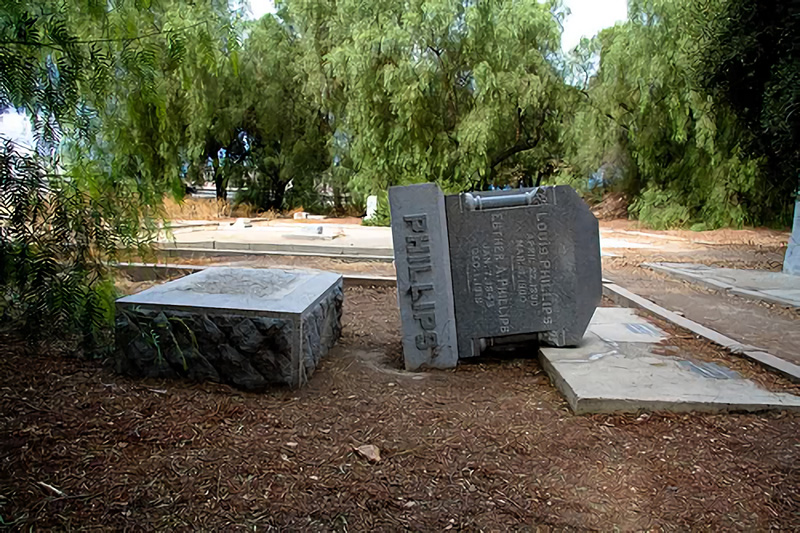
Photo by rwpeary on Flickr.
Bastards! This sort of thing genuinely sickens me...
